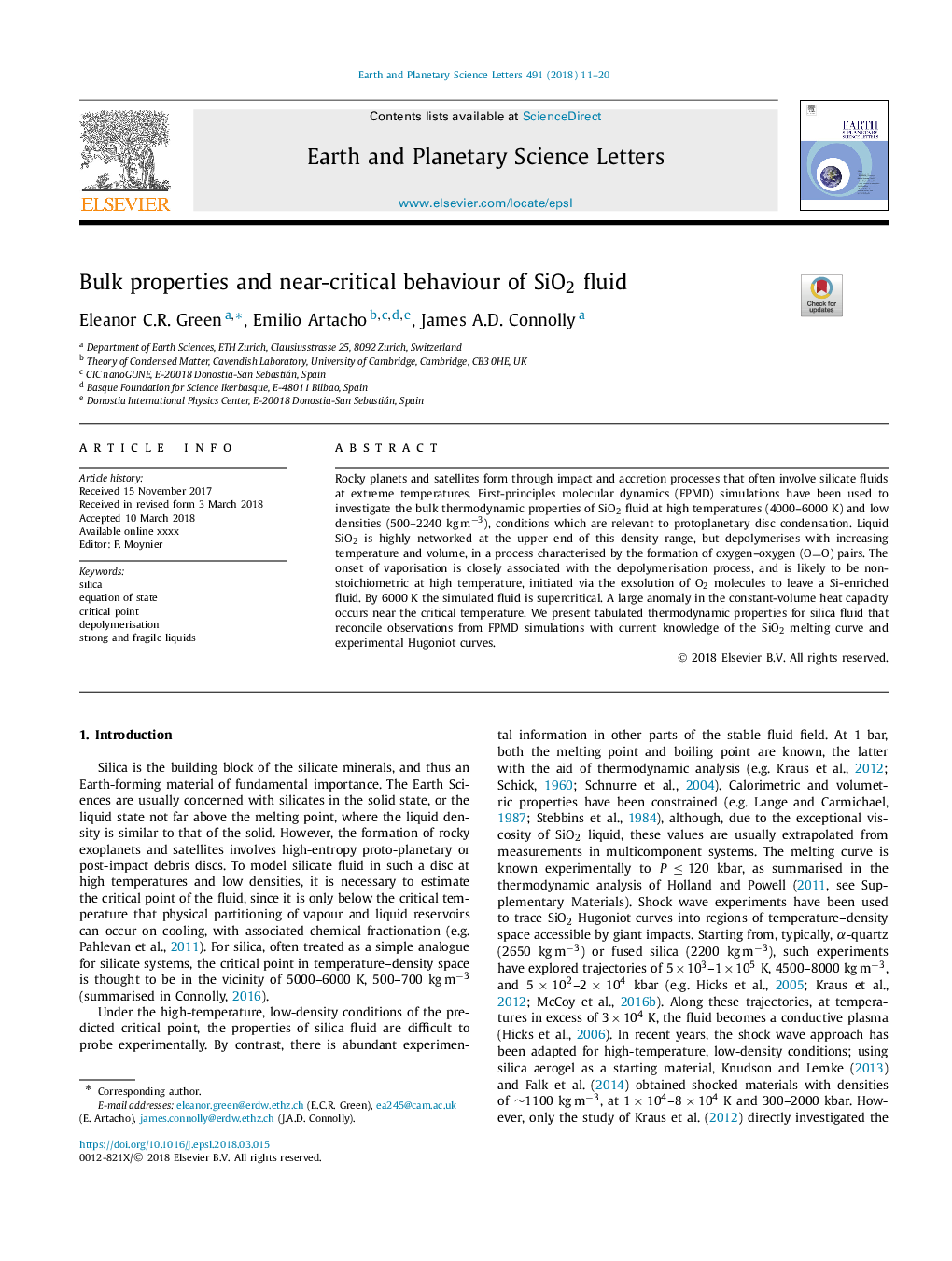| Article ID | Journal | Published Year | Pages | File Type |
|---|---|---|---|---|
| 8906927 | Earth and Planetary Science Letters | 2018 | 10 Pages |
Abstract
Rocky planets and satellites form through impact and accretion processes that often involve silicate fluids at extreme temperatures. First-principles molecular dynamics (FPMD) simulations have been used to investigate the bulk thermodynamic properties of SiO2 fluid at high temperatures (4000-6000 K) and low densities (500-2240 kgâmâ3), conditions which are relevant to protoplanetary disc condensation. Liquid SiO2 is highly networked at the upper end of this density range, but depolymerises with increasing temperature and volume, in a process characterised by the formation of oxygen-oxygen (OO) pairs. The onset of vaporisation is closely associated with the depolymerisation process, and is likely to be non-stoichiometric at high temperature, initiated via the exsolution of O2 molecules to leave a Si-enriched fluid. By 6000 K the simulated fluid is supercritical. A large anomaly in the constant-volume heat capacity occurs near the critical temperature. We present tabulated thermodynamic properties for silica fluid that reconcile observations from FPMD simulations with current knowledge of the SiO2 melting curve and experimental Hugoniot curves.
Related Topics
Physical Sciences and Engineering
Earth and Planetary Sciences
Earth and Planetary Sciences (General)
Authors
Eleanor C.R. Green, Emilio Artacho, James A.D. Connolly,
